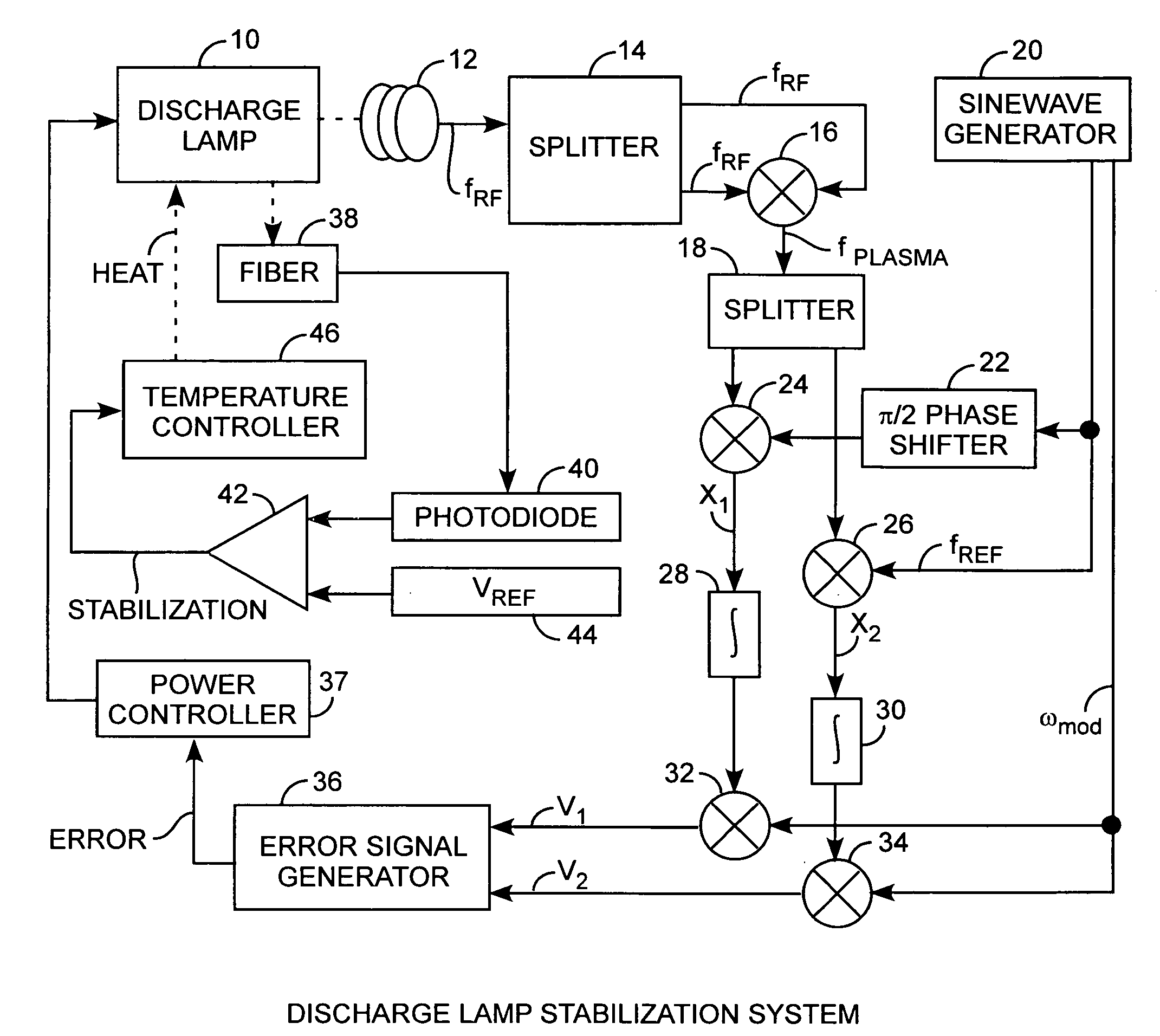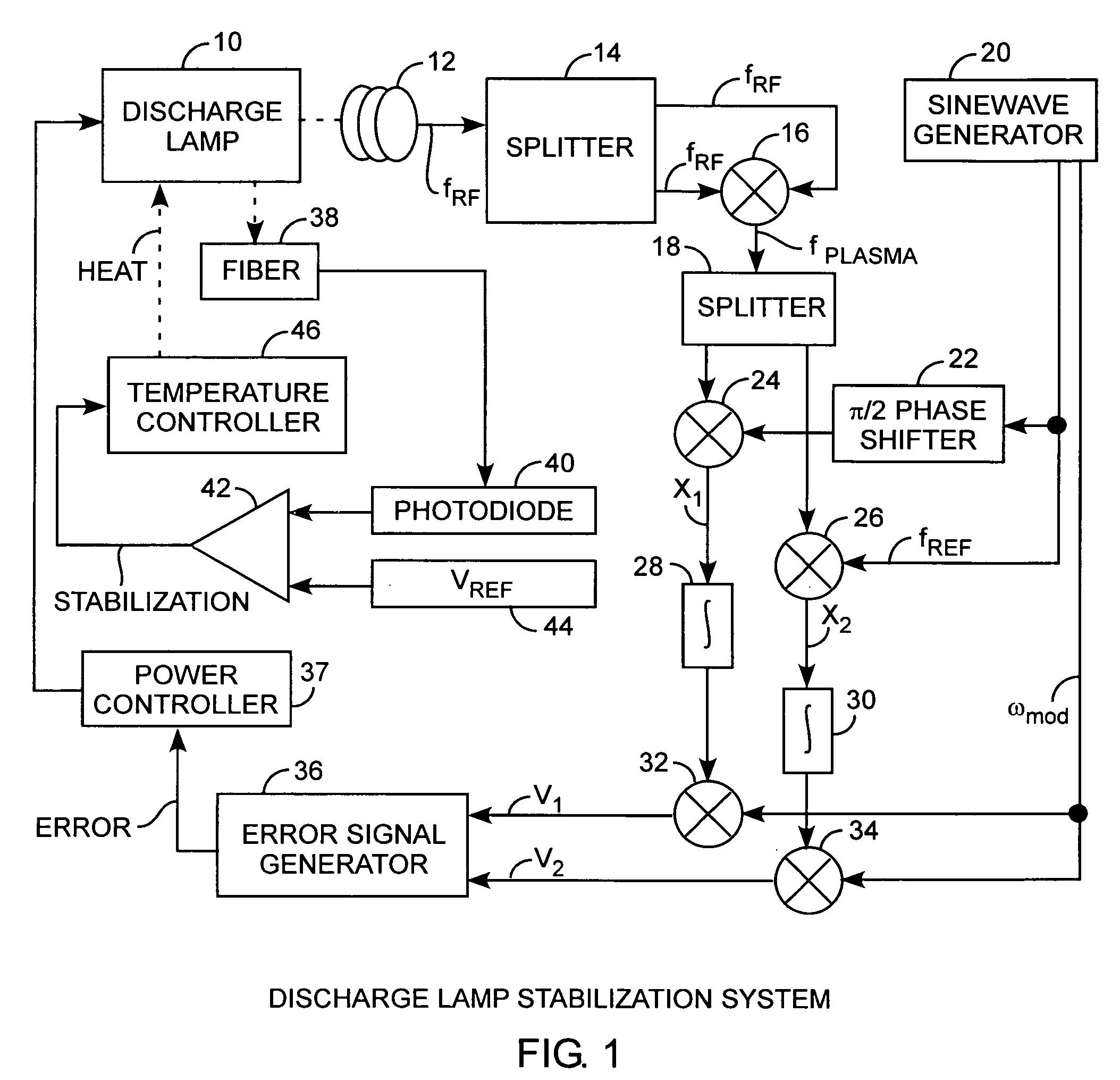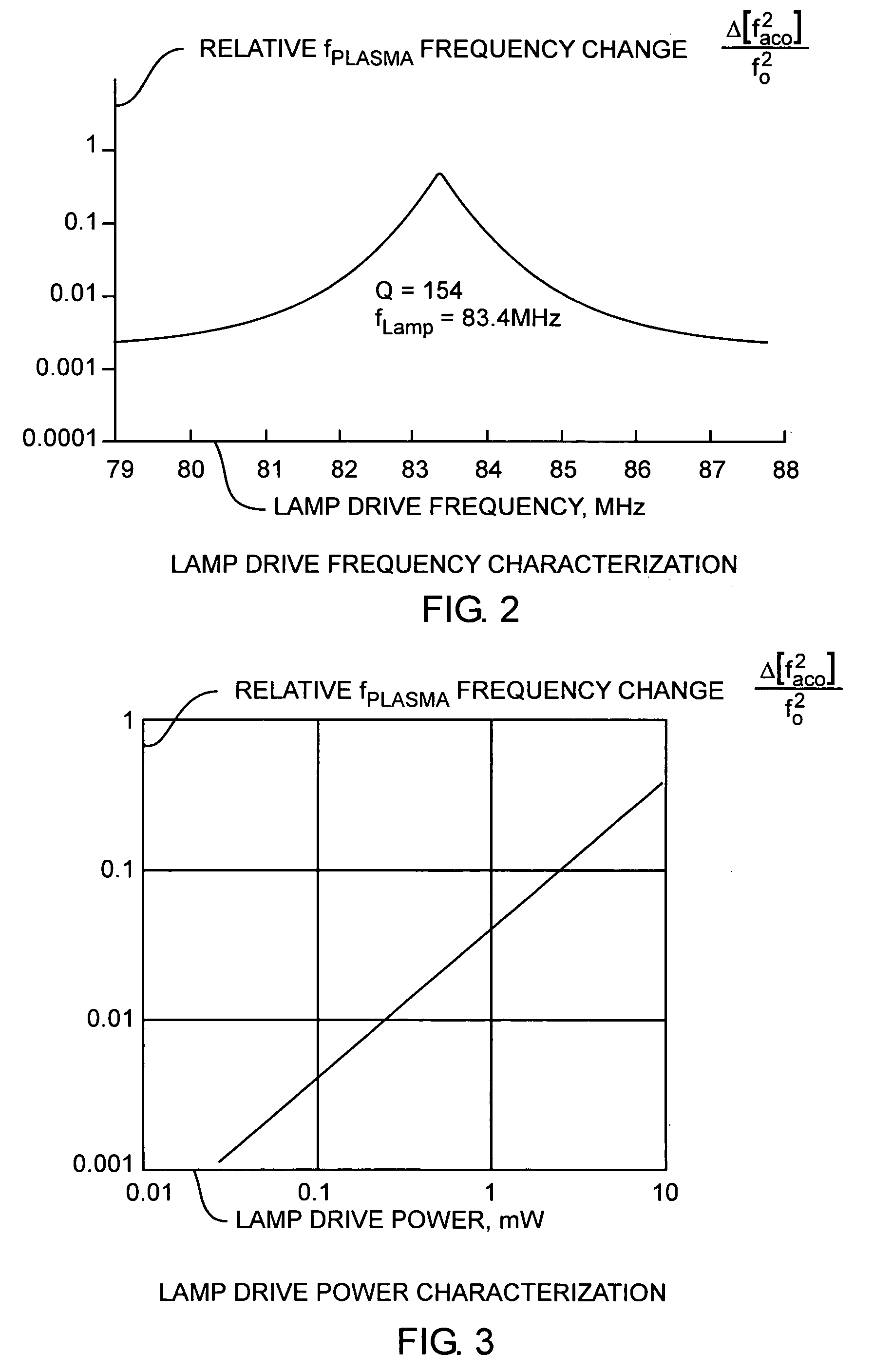Discharge lamp stabilization system
a technology of discharge lamp and stabilization system, which is applied in the field of atomic clocks, can solve the problems of affecting the accuracy of the atomic clock, affecting the emission characteristics of discharge lamps, and variations in the reference oscillator frequency, so as to stabilize the lamp emission, and stabilize the lamp emission
- Summary
- Abstract
- Description
- Claims
- Application Information
AI Technical Summary
Benefits of technology
Problems solved by technology
Method used
Image
Examples
Embodiment Construction
[0019] An embodiment of the invention is described with reference to the figures using reference designations as shown in the figures. Referring to all of the Figures, a discharge lamp 10 is part of a resonant RF circuit that generates an RF signal fRF at 83 MHz. A pick-up coil 12 is placed around the glass envelope, not shown, of the lamp 10, and detects the 83 MHz RF signal fRF along with the acoustical ion oscillation sideband signals. The RF signal from the coil 12 is split by a splitter 14 and squared in a mixer 16 for providing a fplasma signal that is then split by a splitter 18. The splitters split the signal into two identical signals and the mixers multiply the two inputs. The mixer 16 downconverts the acoustical ion oscillation sideband-signal to baseband.
[0020] A sinewave generator 20 provides a FREF signal and a π / 2 phase shifted FREF signal to respective mixers 26 and 24 for providing an inphase X1 signal and a quadrature X2 signal. The inphase X1 signal and the quadr...
PUM
 Login to View More
Login to View More Abstract
Description
Claims
Application Information
 Login to View More
Login to View More - R&D
- Intellectual Property
- Life Sciences
- Materials
- Tech Scout
- Unparalleled Data Quality
- Higher Quality Content
- 60% Fewer Hallucinations
Browse by: Latest US Patents, China's latest patents, Technical Efficacy Thesaurus, Application Domain, Technology Topic, Popular Technical Reports.
© 2025 PatSnap. All rights reserved.Legal|Privacy policy|Modern Slavery Act Transparency Statement|Sitemap|About US| Contact US: help@patsnap.com



